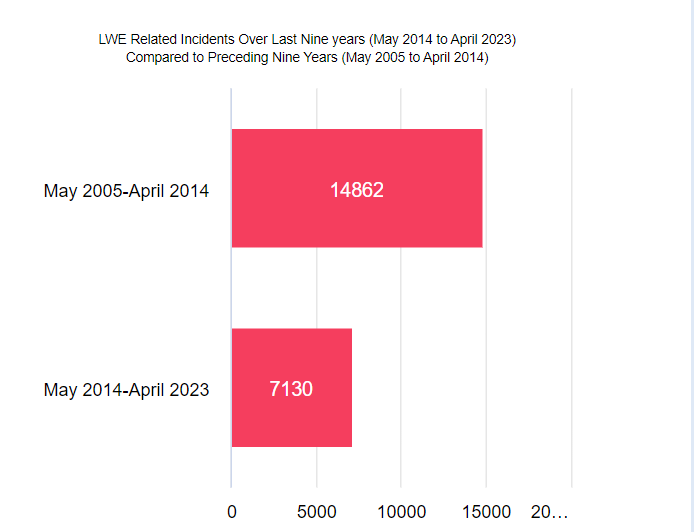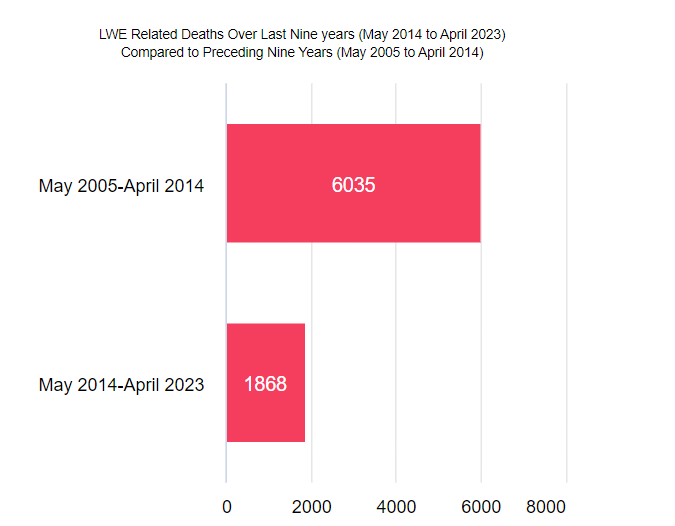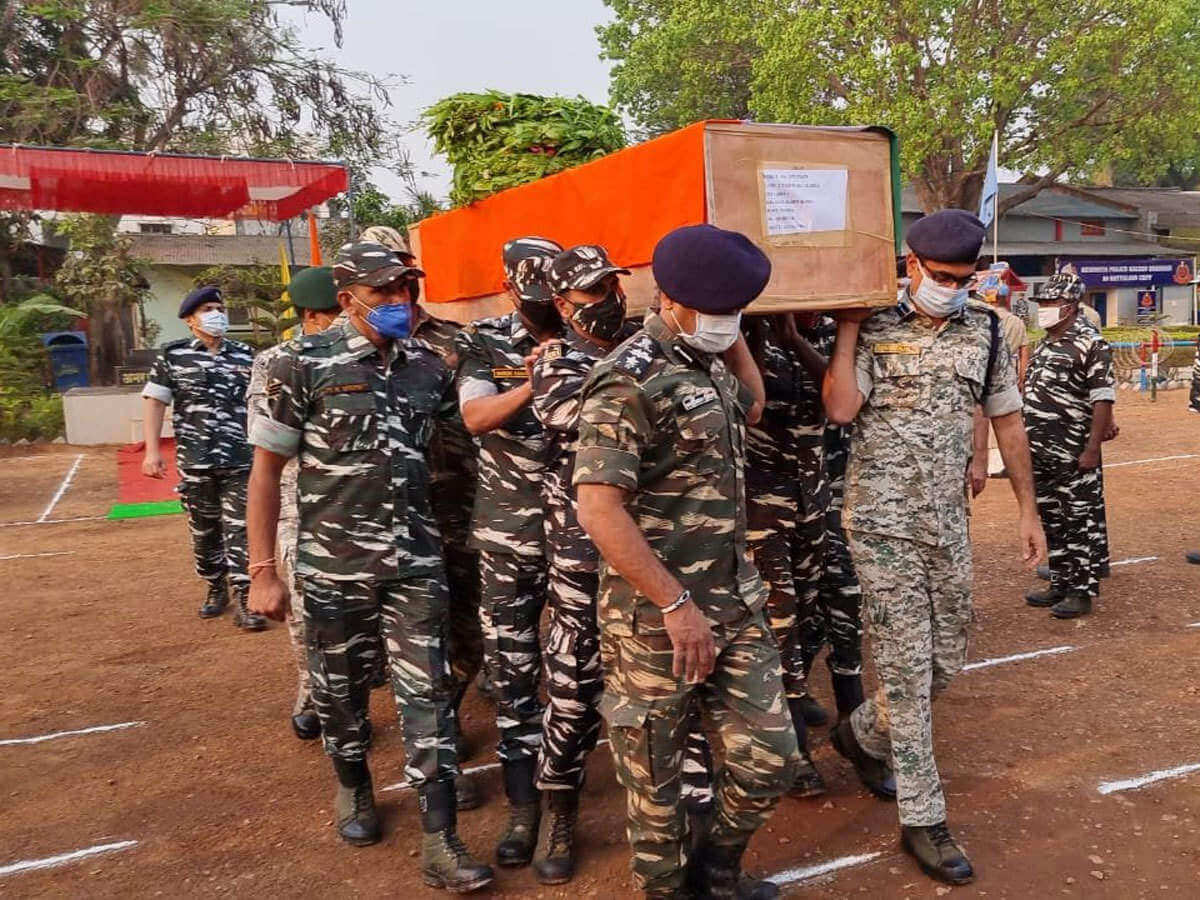Minister of State for Home Affairs, Nityanand Rai, stated in the Lok Sabha (Lower House of the Parliament) on Tuesday that in the past nine years (2014-2023), deaths from violence related to Left Wing Extremism were down by 69% in comparison to the preceding nine years (2005-2014).
Providing this information in reply to a question during the ongoing Monsoon Session of the Parliament, Rai said that the steadfast implementation of the government’s multi-pronged strategy related to Left Wing Extremism (LWE) resulted in the consistent decline.
Reduction in Numbers
According to the Ministry of Home Affairs (MHA), from 2004 to 2014, there were 17,679 LWE-related incidents and 6,984 deaths. In contrast, from 2014 to 2023 (till 15 June 23), there have been 7,649 LWE-related incidents and 2,020 deaths.

The ministry stated that LWE-related violence reduced by 52% from 14,862 to 7,130. Additionally, the total number of deaths was reduced by 69% from 6,035 to 1,868 in the said period.
The minister said that comparing various statistics of LWE violence over the last nine years (May 2014 to April 2023) with the preceding nine years (May 2005 to April 2014) shows remarkable improvement in the country’s LWE scenario.
Rai mentioned that the figures reflect the efficacy of operations conducted by the security forces and the capacity-building measures undertaken by the Ministry of Home Affairs. He said that the government’s developmental outreach had resulted in many LWE cadres shunning the path of violence and returning to the mainstream.
Government Policies
Under its strategy to tackle the left wing extremism, the government has adopted a multi-pronged approach involving security-related measures, development interventions, ensuring local communities’ rights and entitlements, etc.
The Indian government approved the ‘National Policy and Action Plan to address LWE’ in 2015.
A separate LWE division was created in the MHA in 2006, which oversees the deployment of Central Armed Police Forces (CAPFs) in the affected states and capacity building.
Rai also mentioned that the government has enacted the Juvenile Justice (Care and Protection of Children) Act, 2015, to protect children affected by armed conflict, civil unrest or natural calamity.

The minister also highlighted the role of the Women and Child Development Ministry in supporting the States/Union Territories in providing institutional and non-institutional care to the affected children.
Major LWE Violence Incidents in the Country
In April this year, almost ten policemen were killed in Chattisgarh’s Dantewada in a deadly attack by Left-Wing extremists.
Twenty-two police and paramilitary personnel died in another attack in Sukma-Bijapur in April 2021. Similarly, in March 2020, 17 members of a police patrol were killed in an ambush in Sukma.
The government is undertaking several development and counter-insurgency measures to tackle the LWE in the affected areas.
The LWE organisations aim to bring change through revolution. The LWE or Naxal insurgency in India started in Naxalbari, West Bengal, in 1967 and has since affected the states of Chattisgarh, Jharkhand, Odisha, Bihar, West Bengal, Andhra Pradesh, Telangana, Maharashtra, Madhya Pradesh and Kerala.

